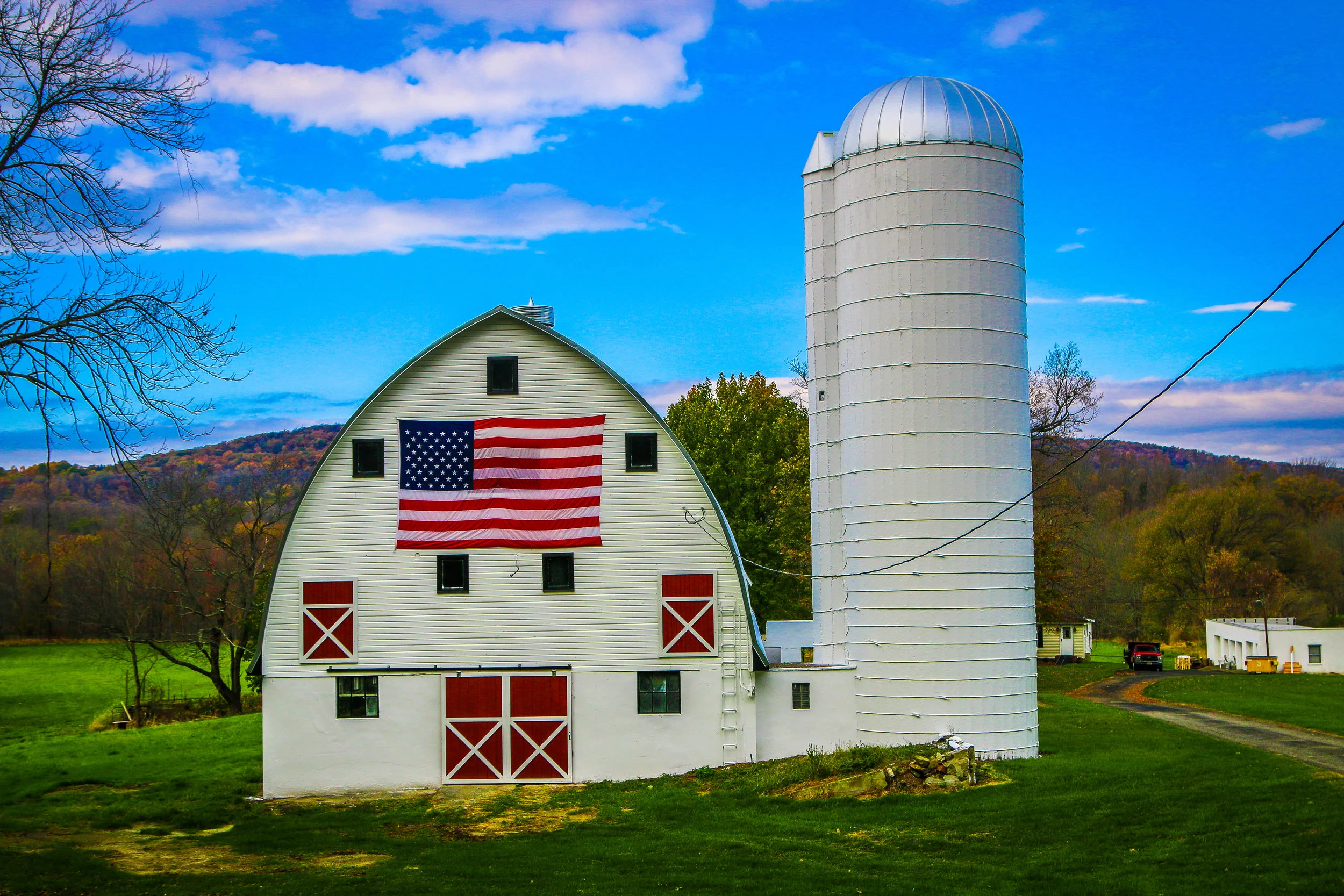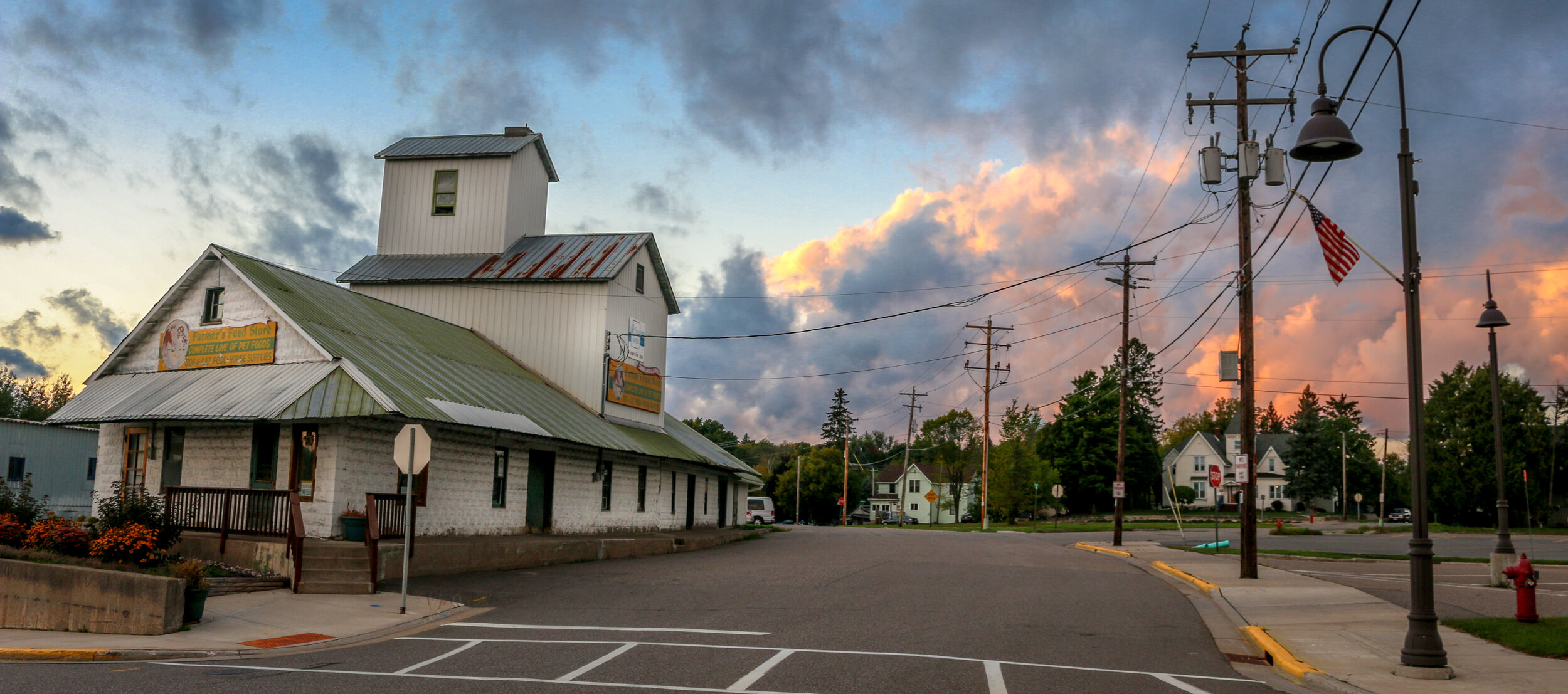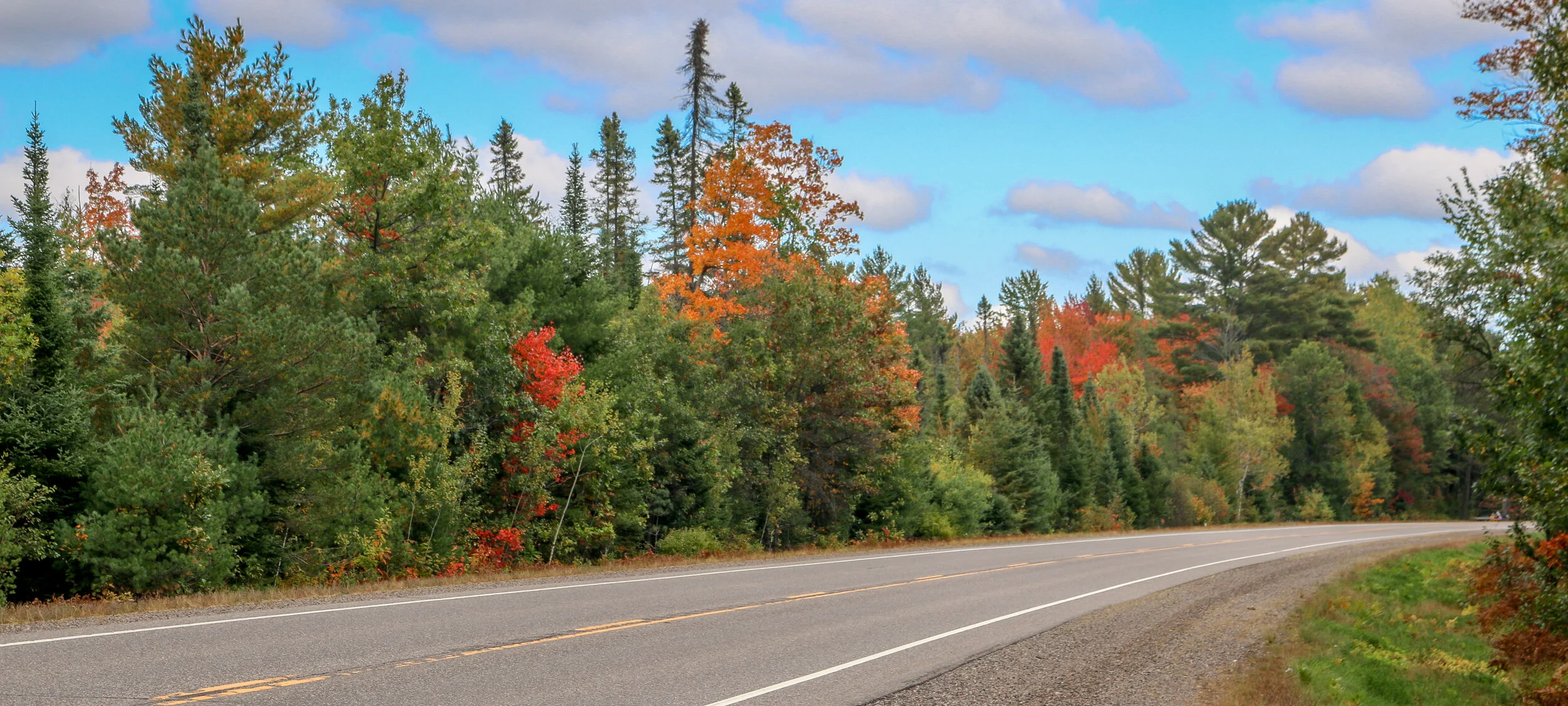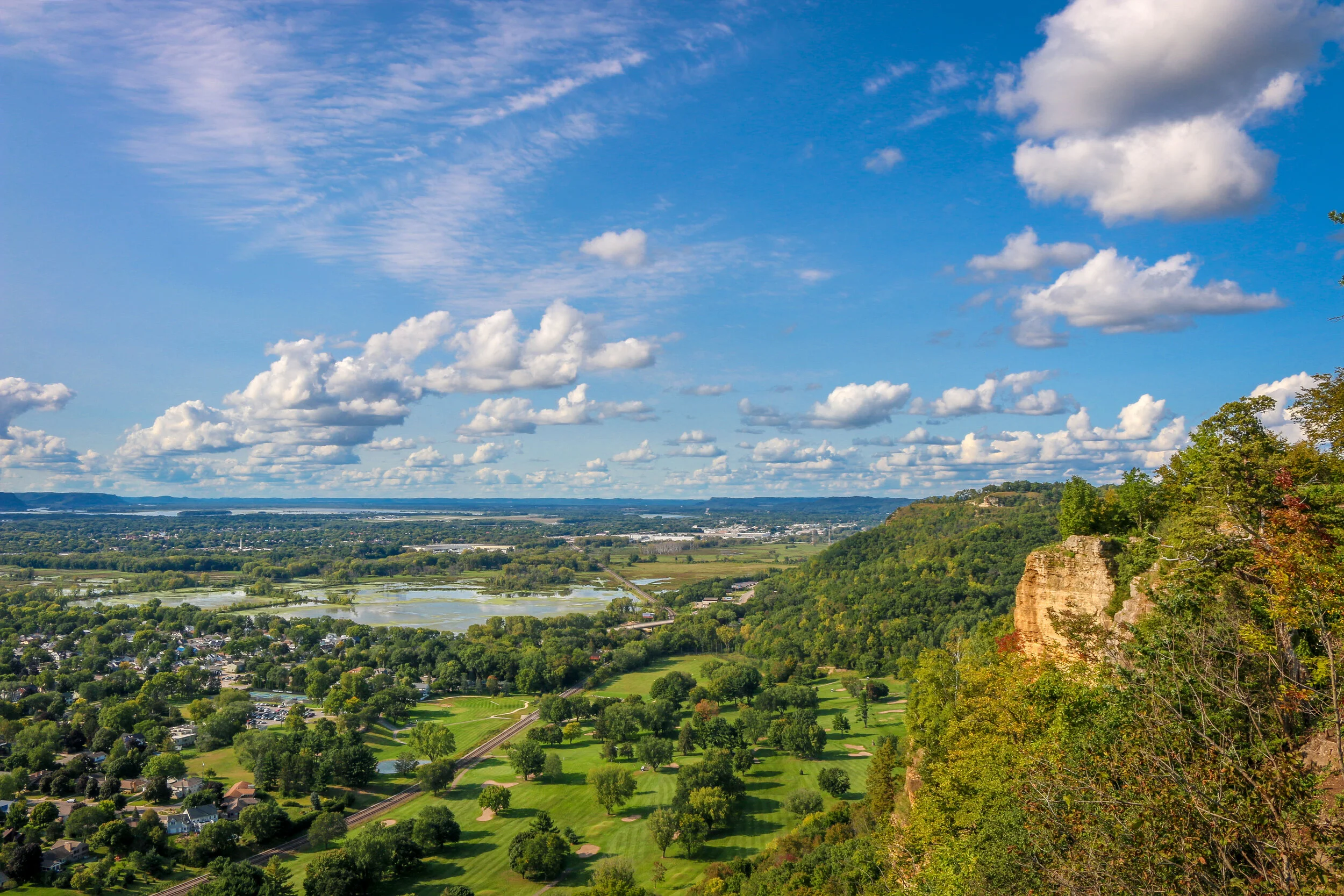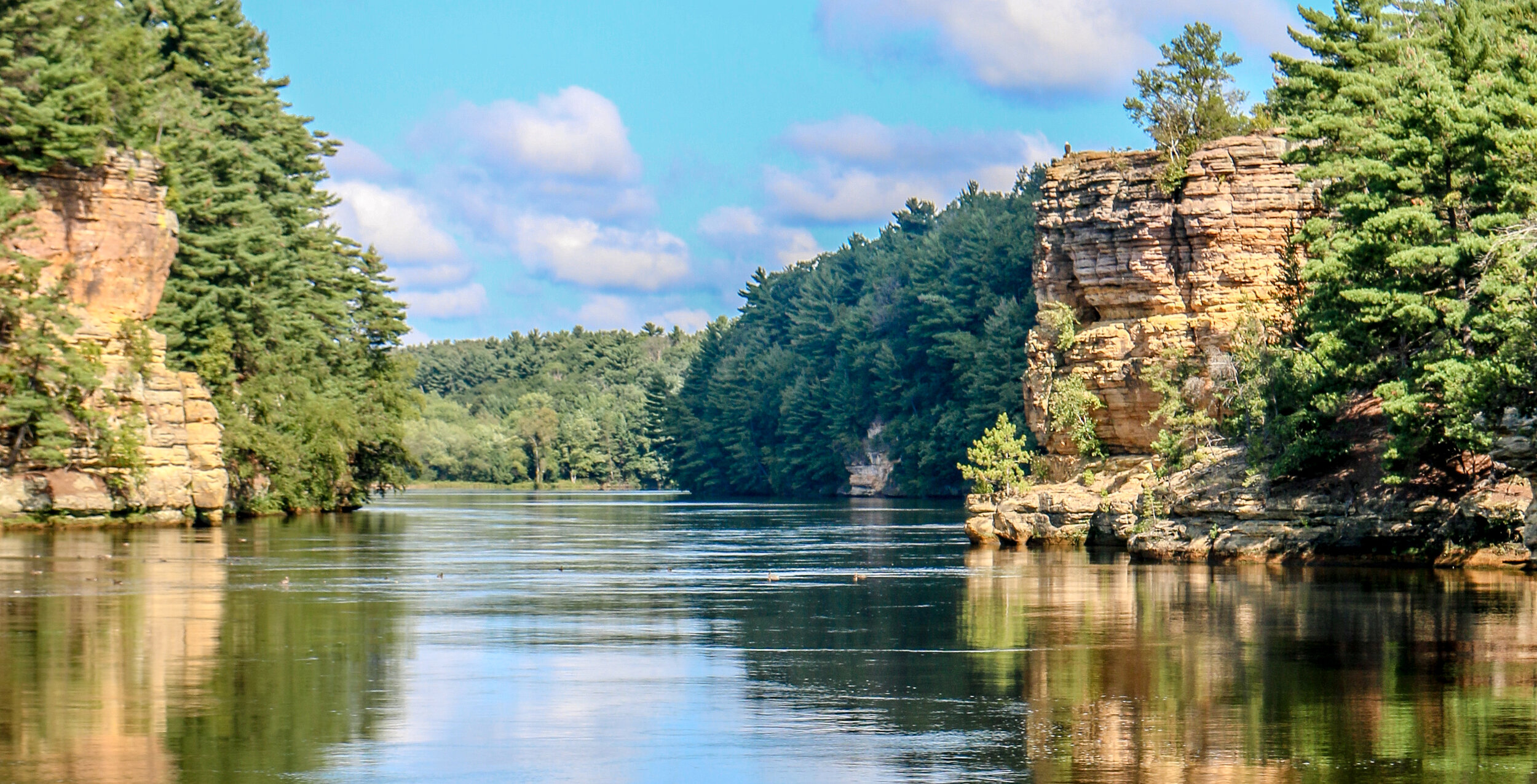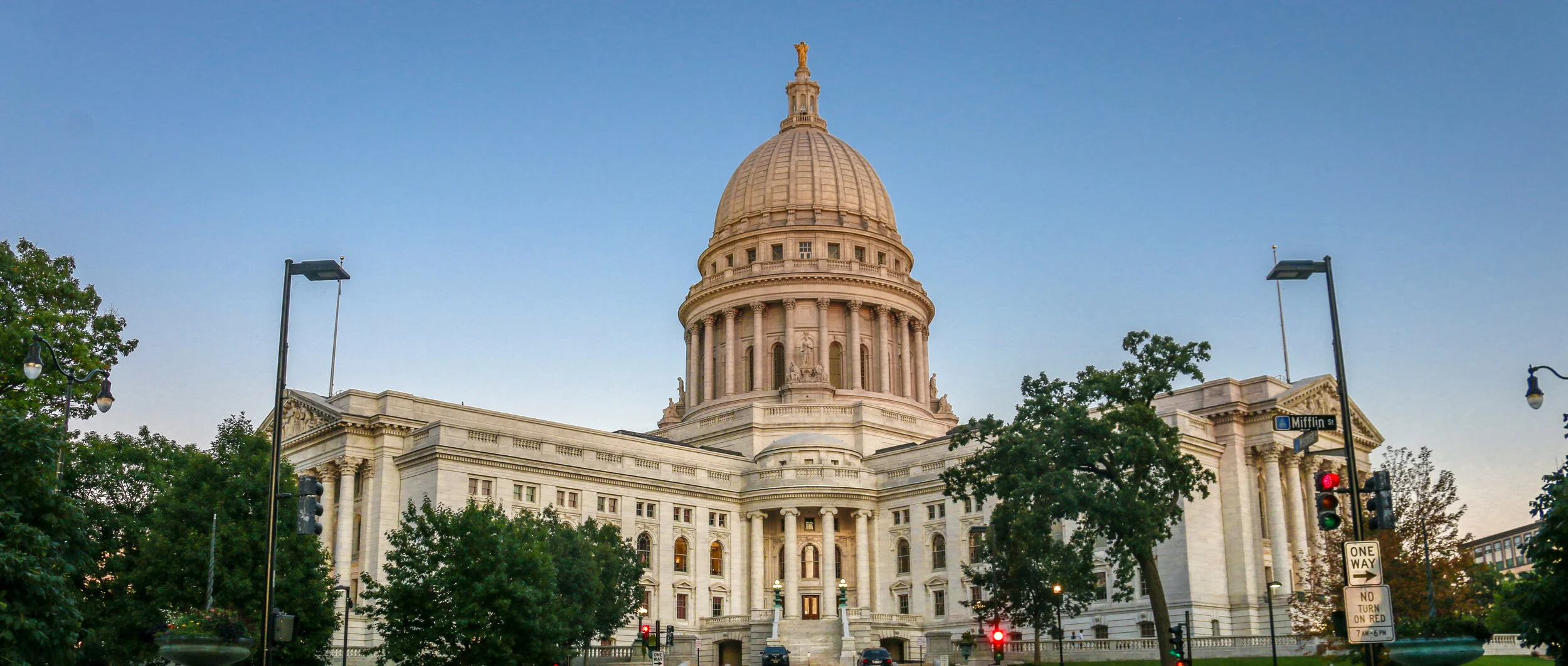According to their Chamber of Commerce, Bayfield is one of USA Today's Best Coastal Small Towns, Wisconsin's Smallest City, the Berry Capital of the State, and the Gateway to the Apostle Islands. That’s a lot for a place with a population of only around 500. the town was named in 1856 for Henry Bayfield, a British admiral and topographic engineer who explored the region in the 1820s.Lumber and fishing were the big industries in the early days and Bayfield also served as a port city. You can tell from some of the beautiful Victorian homes in town that at least a few people made their fortunes here. I found Bayfield to be a charming place with beautiful architecture and wonderful views out over the lake. It was my jumping-off point to both Madeline Island and Apostle Islands National Lakeshore. If you visit, be sure you try the local delicacy of whitefish livers which was one of the tastiest dishes I’ve had in a long time. I hope you enjoy these photos from this wonderful lakefront city.
Viewing entries tagged
Wisconsin Photos For Licensing
Madeline Island is the largest of the Apostle Islands which sit just off the coast of Wisconsin’s Lake Superior shoreline. It is the only one of the Apostles which isn’t a part of Apostle Island National Lakeshore and the only one open to development. The permanent population of the island hovers around 300 but grows considerably during the summer months. The island is named after Madeline Cadotte, an Ojibwe woman and the daughter of Chief White Crane who married a white fur trader and lived on the island in the 19th century.
The island is important to the Ojibwe as a spiritual center and was also the home of Chief Buffalo, the man responsible for negotiating the Treaty of 1854 which helped create a permanent Reservation on the Lake Superior coast.
Madeline Island was a major fur trading post for many years and later industries included commercial fishing, logging and tourism. Both Father Marquette and Bishop Baraga (the “Snowshoe Priest”) visited the island and helped establish missions there.
I had a great visit to Madeline Island. The ferry only took about 20 minutes to make the crossing and I brought my van with me and stayed at wonderful Big Bay State Park on the far side of the island. The ferry docks at La Pointe, the island’s only town which has several restaurants, bars and shops. It’s also where I found Tom’s Burned Down Cafe, one of the coolest bars I went to in the state. I enjoyed hiking in the state park and a long drive around the island on a very well maintained dirt road. I was sorry that the museum was closed when I was there, but I’m sure it had some interesting artifacts in it. Sunset over Lake Superior looking back at the mainland was magical. I hope you enjoy these photos from my time on beautiful Madeline Island.
Mercer is a small community of under 2,000 people situated along Highway 51 in Iron County, Wisconsin. The area has one of the highest concentrations of loons in the country and Mercer has designated itself The Loon Capital of the World. The town placed a massive 16 foot loon at its Chamber of Commerce named Clair d’ Loon. Every year in August, Mercer celebrates Loon Day which includes a loon calling contest. I thought it was a great little town with some fun shops and a cute Northwoods-style downtown area. It seemed like a lot of the businesses in town were for sale, so maybe this would be a great opportunity for someone looking to move to the area. I wasn’t in Mercer long, but it definitely charmed me and I wanted to share these pictures with you from The Loon Capital of the World.
Rhinelander is a charming little town in Oneida County in the Northwoods of Wisconsin. Located near the convergence of the Wisconsin and Pelican Rivers, Rhinelander got its start as a lumbering town and was first called Pelican Rapids. They changed their name to Rhinelander after Frederic Rhinelander, who was president of the Milwaukee, Lake Shore and Western Railroad at the time, in an effort to bring the railroad to their town.
In 1893 a local man named Eugene Shepard came to town with stories of a savage beast he caught which he called a “hodag”. A couple of years later, he told people he had caught another hodag, but this time it was alive. He brought his catch to the county fair where he charged people for a peak at the beast. When news of the hodag reached the Smithsonian Institution, they were determined to send a team to document the find. It was then that Shepard admitted it was all a hoax. Despite this admission, Rhinelander took the hodag and ran with it. Today you can find hodag statues at the Chamber of Commerce, the courthouse, the library and many other locations. You can drink Hodag Blood Ale at the brewery and cheer on the Rhinelander Hodags at their high school sporting events. It is definitely the town’s mascot.
I had a wonderful visit to Rhinelander. I loved the beautiful downtown area, the county courthouse and especially the photogenic feed store in town which was especially magical the evening I took these photos. I hope you enjoy these photos from my visit to Rhinelander, Home of the Hodags.
Hello Everyone! First and foremost this week, thank you all for your concern over my health last week. It was definitely just a cold and passed in a couple of days. It’s not fun to be sick on the road, but I was happy it was neither too hot to hang out in my van nor too cold to hang out outside of it making it far easier to get past. It’s been a beautiful week up here in the Northwoods of Wisconsin and a much quieter week than I’ve had all summer. As you all know better than anyone, I’ve been going pretty full-on since the beginning of June and while it’s been a wonderful summer, taking it easy for a few days has been really nice. It’s mostly been a week of fishing, reading and relaxing which I’ll get to in a minute, but first a couple of things that have been on my mind this week.
I saw a sign outside a restaurant this week which said “Money is not free!! This is NOT the American way! Please go to work. Be an American! Help your community, get a job!” I found this particularly offensive outside of a restaurant. You may not know that I spent a good chunk of my life working in restaurants, so I know a fair bit about the industry. Minimum wage in restaurants in the U.S. is $2.13 an hour with Wisconsin’s minimum wage slightly higher at $2.33. That means for a 40 hour week, a restaurant pays a server less than a hundred dollars. That money goes to pay that server’s taxes so in however many years I worked in restaurants, I never once received a paycheck that didn’t have $0.00 on it. You are dependent on a custom of tipping in this country and people’s individual upbringing, understanding and whim. That custom dictates people leave 15-20% of their bill to their server (which is taxed). From those tips, the server has to give a percentage to the bartender and the busboys. More recently, restaurants have decided to dip even further into their servers’ pockets and have them tip out the host, food runners and even the kitchen staff (and have cut those other employees’ salaries accordingly). Instead of a more equitable and reasonable sharing of their own profits (which would cause people to work harder and be more loyal) they’ve decided that servers should share around money left for them by their customers instead. The last time I worked at a restaurant, I was expected to “tip out” 5% of my sales or a quarter to a third of my tips, depending on how generous people were that day. And now restaurant owners have the gall to complain that servers don’t want to work under these conditions and for these paltry wages. They are calling them lazy and un-American. I find it highly offensive and you should too. I have seen “Help Wanted” and “Now Hiring” signs on pretty much every restaurant I’ve walked past this summer, but none are offering $10/hour (some may be, but if they were they would advertise it) and I guarantee that none are offering profit-sharing or benefits. A reckoning in the American restaurant industry is long overdue, and maybe it’s actually upon us. Unlike factory jobs, service jobs can’t be outsourced to other parts of the world (or believe me, they would be). People might take to ordering off of an iPad at their table, but I don’t see that working out so well even at McDonalds. If restaurants want people to work for their business, they may just have to pay people more than slave-wages and stop dipping so deep into their employee’s pockets to pay their other staff. Or they can continue running short-staffed and losing money hand-over-fist which is what they’re doing now, waiting for federal pandemic unemployment to run out so they can get their servants… I mean servers back. I feel for people who are struggling keeping their businesses going, I really do. But in an industry which pays someone two dollars an hour and expects their loyalty and dedication I have my issues. I saw this sign in the parking lot of a restaurant and pulled right out again taking my business elsewhere.
My second issue which came up this week had to do with masks and businesses (I know, you’re probably as tired as I am of hearing about it so I’ll make this short). Here in Northern Wisconsin, the only places I’ve seen mask “mandates” are at the post office and the library. The Indian Reservations have them as well, but those are governed under Tribal Law and there is no arguing them. I have, however, seen many businesses which, in typical Wisconsin fashion, kindly request that all customers wear a mask. They’re not forcing anyone to do anything, just asking that people respect their wishes to enter their business. I have been shocked to walk into many of these places (with my mask on, of course) and see nobody else in the whole place wearing one. If I ask you to take off your shoes when you come into my house, you don’t have to do so but it makes you a real a**hole if you don’t. The same goes for going unmasked in a store that requests you do so. I don’t remember ever seeing anything else in my life that turned so many decent people into stubborn jerks.
See what happens when I slow down? Too much time to think about these things for sure. After writing last week’s post, I did spend some more time in Rhinelander and really enjoyed it. They’ve definitely gone “all-in” on their love for the mythical beast the hodag. There’s Hodag Park and the Hodag Festival and their high school mascot is also the hodag. You can get Hodag Blood Ale at the brewery and there are whole stores dedicated to selling hodag memorabilia. It’s fun, but a little over-the-top, especially in a town with more to offer. But seeing the hodag around wherever I looked made me smile and I enjoyed my time in Rhinelander.
The Driftless Region of Wisconsin is the area below the furthest advance of the glaciers during the last Ice Age and covers most of the southwest portion of the state.. It is home to wonderful, ancient sandstone formations, beautiful parks and great little towns. This area is definitely hillier than much of the rest of the state and ends (at least as far as Wisconsin is concerned) at the Mississippi River on its western border. I had a great time exploring the Driftless, boating through the Wisconsin Dells, walking the State Park trails, driving the Great River Road and exploring the towns I found along the way. I encountered many different European-American traditions along the way including two of Wisconsin’s most famous: beer and cheese. I visited Wisconsin’s first Capital at Belmont, it’s biggest tourist attraction at House on the Rock and some of the state’s mining history at Mineral Point The Driftless is a sprawling region with a diverse culture and a fascinating history. I hope you enjoy these photos from Wisconsin’s Driftless Region, a unique place which I really enjoyed visiting.
Hello Everyone! It’s been a little quieter out here on the road this week than the last few weeks. I’ve tried to slow down a little and get some fishing in while I’m here and the warm weather is too. Unfortunately, I’ve also managed to catch a cold this week which has only slowed me down further. I’ve caught this cold even with all the hand-washing and masking and being careful which just goes to show how easy it is to pass things along. I’ll be laying low for a couple of days, hydrating and getting some sleep and hopefully it’ll pass on through sooner rather than later. This week brought me from the middle of Wisconsin’s section of the Great River Road to the heart of the Northwoods, and it’s been a really wonderful week which I can’t wait to tell you about.
When I left you last week, I was in La Crosse which really is quite a nice little city. There are lots of old buildings and corner bars and with a reasonable sized student population it felt very vibrant and alive. Last Wednesday night I went for a cruise on the La Crosse Princess, a sternwheel paddleboat that does several different tours on the Mississippi River. I went on a short 90 minute beer and pizza cruise which was definitely a bargain at $21. It was nice to be out on the river, and that length of time was just about perfect for my attention span. The weather was perfect and I really enjoyed it. After the cruise I went and saw some live music at Big Al’s downtown which was great and sat with a wonderful older lady who was very into the live-music scene. It was very kind of her to ask me to join her. We had a nice chat and enjoyed some good music and she invited me out the following night to a different venue.
Thursday I spent a good chunk of time in the library, trying to get a jump on some work for this week. In the afternoon I drove up Grandad’s Bluff, La Crosse’s most well-known geologic feature. The road took me right to the top for wonderful views out over the city and the Mississippi River. It was cool and quiet up there and I stayed up on top for quite some time. Later that evening I went for a stroll along the Mississippi and then to a wonderful night of live music at the amphitheater right there on the river. It’s getting a little cooler out and it was nice to just sit outside and have a beer and enjoy the music. The band was good and I stayed right up until the end. Afterwards I joined my friend from the previous evening at the old train station for a really good grandfather-grandson duo and met her boyfriend and granddaughter. When the band finished up, I took one last stroll around town and then called it a night.
Friday morning I was up and off and headed north along the Great River Road. I stopped in the small and charming river towns of Trampealeau and Alma for a while and found a nice apple orchard along the way to pick up some fresh apples which are just coming into season up here. Then I headed on to Nelson for lunch under the Twin Bluffs and an ice cream at their wonderful creamery. From there, I moved on to Pepin which is best known as the birthplace of Laura Ingalls Wilder.
The Potsdam Sandstone that makes the beautiful formations we find in the Wisconsin Dells was formed 500 million years ago during the Cambrian Era when this area was the sandy shore of a vast inland sea. 15,000 years ago, during the last Ice Age, the glaciers came within 4 miles of The Dells but never quite got there, making this the edge of what is called The Driftless Region (the part of Wisconsin which evaded glaciation). When the Ice Age started to end, the meltwater formed a massive lake known as Glacial Lake Wisconsin. When the ice dam that held the lake back finally collapsed, it unleashed a massive flood which carved the gorges of the Wisconsin Dells in a matter of days or weeks. We get the word ‘Dells’ from the French word ‘dalles’ which means slabs of rock.
Human history in the area stretches back thousands of years, but the modern era of The Dells as a tourist draw can be traced to legendary photographer H.H. Bennett. Bennett took up photography after the Civil War but became frustrated that he could not capture moving objects on film without them blurring. He built his own camera which he referred to as a “snapper” and took a famous photo of his son jumping to Stand Rock. This photo circulated around the country and then the world and people had to come and see these Dells for themselves. The Dells became quite a mess with all of the attempts to capitalize on this beautiful natural area’s popularity (think Niagara Falls), but thankfully it has been designated a State Natural Area which is overseen by the State of Wisconsin. The weird tourist traps which have persisted are thankfully out of view of The Dells themselves.
I came to The Dells a few times when I was a kid and always remembered it as a beautiful place. I was happy to find I still thought that after many years away and having visited a lot of beautiful areas in the interim. I took the Upper Dells boat tour and a DUCK tour of the Lower Dells while I was there and enjoyed both of them (although choosing between the two would be easy - the Upper Dells all the way). I was also lucky to have absolutely beautiful weather while I was there. I hope you enjoy these photos from my visit to the beautiful Wisconsin Dells.
I haven’t met many people in Wisconsin who don’t get a dreamy look in their eyes at the mere mention of Door County. It’s clearly a place near and dear to generations of people who have passed time there over the years and it definitely lived up to the hype. Door County is the peninsula which juts out between Green Bay and Lake Michigan, often thought of as Wisconsin’s Thumb. The well-manicured towns that make up Door County are often likened to New England seaside towns and while I can see the similarities, to me they were unique and wonderful and pure Wisconsin. Each town on the peninsula was beautiful and special in its own way, and I think travelers’ own tastes would be the only way to choose a favorite. The beautiful flowers, clean beaches, busy farm stands, pristine state parks and great little restaurants all helped make my stay in Door County a good one. I definitely understand what all the fuss is about and I know when I hear someone mention it in the future, I may get a dreamy look in my eyes myself. I hope you enjoy these photos from my stay in quaint and charming Door County, Wisconsin.
In its early days, Algoma was called Wolf River and attracted a diverse community of European settlers to the shores of Lake Michigan. In 1859, the name was changed to Ahnapee and in 1892 the Ahnapee and Western Railway came through and connected this lakefront town to the inland world. In 1897, they changed their name to Algoma and by then the town had grown to become home to one of the largest commercial fishing fleets on Lake Michigan. Today, Algoma has about 3,000 residents and fishing is still a major industry, although sportfishing has replaced commercial fishing. I had a wonderful visit to Algoma and was impressed by the beautiful Victorian architecture of some of the buildings downtown. and by the wonderful beach and lighthouse It was the historic advertising murals and stunning hand-painted signs that really blew me away though. That is until the sun went down and a beautiful dusk settled over this quaint little town painting it dozens of different colors. It takes a lot of effort to make a town look this cute, and Algoma has obviously chosen people with a true sense of the aesthetic who paid really good attention to detail. On your next visit to Door County, be sure you swing through Algoma, you may find yourself sticking around for a while. I hope you enjoy these photos of adorable Algoma, Wisconsin.
Cedarburg is a beautiful and vibrant old mill town in Ozaukee County, just a half-hour north of Milwaukee. Cedar Creek brought German immigrants to the area in the 1840s where they built grist mills and a small community began to develop. When the train came through thirty years later, the town expanded as it now had access to the larger markets of Milwaukee and Green Bay. Churches were built and streets were laid out, but Cedar Creek was still at the center of the community. As time passed, suburban Milwaukee started edging ever closer, but Cedarburg has been able to maintain its own identity and its small town charm. I enjoyed my visit to Cedarburg and hope you enjoy these photos of this beautiful historic mill town on Cedar Creek.
For those of you who have been following me for a while, you know I have a particular affinity for capital cities. Being from Washington D.C. there is a certain familiarity to a capital city and how it looks and operates. Madison is even closer to my heart since both of my parents attended the University of Wisconsin at Madison and I grew up hearing stories of their time there. The Capitol Building in Madison is actually the forth Capitol of the Badger State. The first Capitol was a hastily built wooden structure in Belmont, Wisconsin which was used for a mere 42 days, during which time a new site was chosen in Madison. The second Capitol was built in Madison in 1837 and the third Capitol was begun in 1857, nine years after the Wisconsin Territory became the state of Wisconsin. That building tragically burned to the ground in 1904 and construction of the current Capitol began soon thereafter under the watchful eye of famed architect George B. Post of New York. The statue of Wisconsin on the Capitol dome was sculpted by Daniel Chester French who also sculpted the statue at the Lincoln Memorial. I loved how many badgers were to be found in the building - in the murals, overlooking the four corners and even on the statue on the dome. Wisconsin is definitely fond of its badgers. I found it interesting that the mural in the state senate chamber commemorates the opening of the Panama Canal - big news when the Capitol was built but it seems odd a hundred years later. I think my favorite story from the Wisconsin State Capitol was that of Old Abe, a bald eagle who once served as the mascot for a Wisconsin Civil War unit and accompanied them into battle. Old Abe was shot during the war but survived and went on to tour the country after the war ended. He went to live in the Capitol building for many years but accidentally died of smoke inhalation when a fire started near his cage. Old Abe was stuffed and sat overlooking the House chamber for many years until he burned in the fire of 1904. A replacement eagle was placed in the rebuilt Capitol to commemorate Old Abe’s legacy. I really enjoyed my guided tour of the Wisconsin State Capitol and hope you enjoy these photos from my visit.

